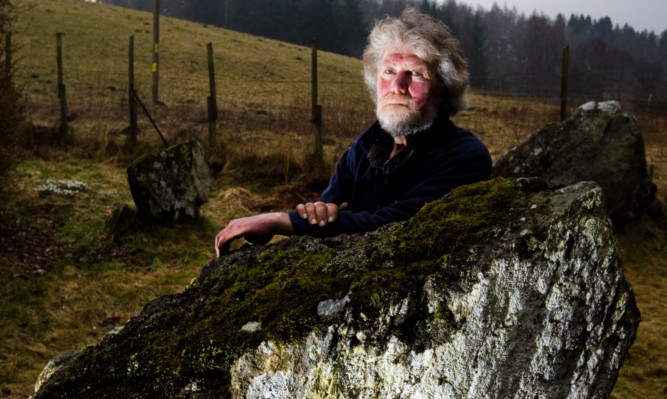A stone circle has led a Perthshire garden to become an unlikely international tourist attraction.
Travellers from across the world have been flocking to see the six small boulders that form an 18ft monument outside Stuart Shilcock’s Ballinluig home.
Stuart (61) bought his home from the Atholl Estates in the 1970s, and with it the stone circle.
After setting up a visitor book last year, Stuart and his partner Julie have discovered people are travelling from as far as Mexico and Peru to come to his garden and see the stones.
He said: “We’ve had quite a few visitors come and see it. It’s marked on the Ordnance Survey maps and it’s mentioned in several books about stone circles.
“A lot of visitors are from North America, because they don’t have things like this there. The big heel stone would have been about 6ft tall, the smaller ones are about 3ft.”
The circle is thought to date to around 2,500 BC and was rediscovered in 1855 when the garden was first formed. Early burials have previously been discovered interred at the foot of the stones.
Each of the rocks, which are made of metamorphic schist stone from the nearby hills, could weigh up to four tonnes (4.4 tons). While many are interested in the history of the site, Stuart admits it has attracted a few “weirdos”.
“We had one guy who used to come and sit cross-legged in the middle of it,” he said.
“We also had an American woman she came along with a dowsing crystal. She was going around hugging the stones and she was saying ‘Can you feel the magnetism?’
“I just tapped her on the shoulder and pointed to the overhead power cables above the circle and said ‘There might be magnetism but that’s where it’s coming from’.”
It is thought prehistoric people formed the circle by using either primitive hand tools or fire to shear the slabs from rock on local hillsides. They would have had to drag the heavy rocks into position with little in the way of technology to help them.
Julie’s son James added: “From the ground we can see only the ‘tips of the icebergs’, so to speak, and as with Stonehenge the mind boggles how people managed to get these stones into position that still stand today.”
Richard Pinn, VisitScotland regional director, said: “It is great news that this ancient stone circle is attracting so much interest from visitors to this tiny corner of Perthshire.
“This historic landmark highlights that in this, the Year of Natural Scotland, we should all celebrate what an amazing array of outstanding natural beauty we have on our doorsteps.”
